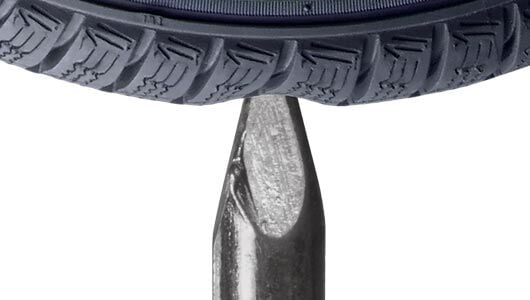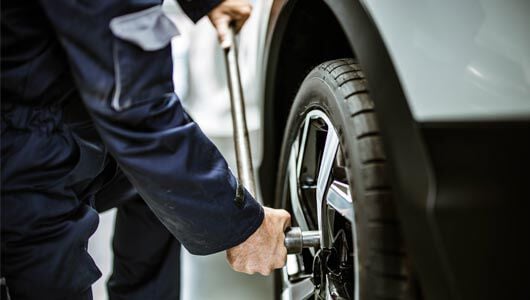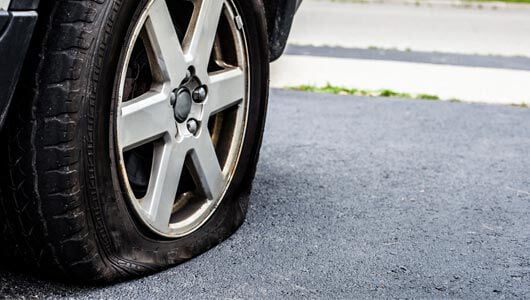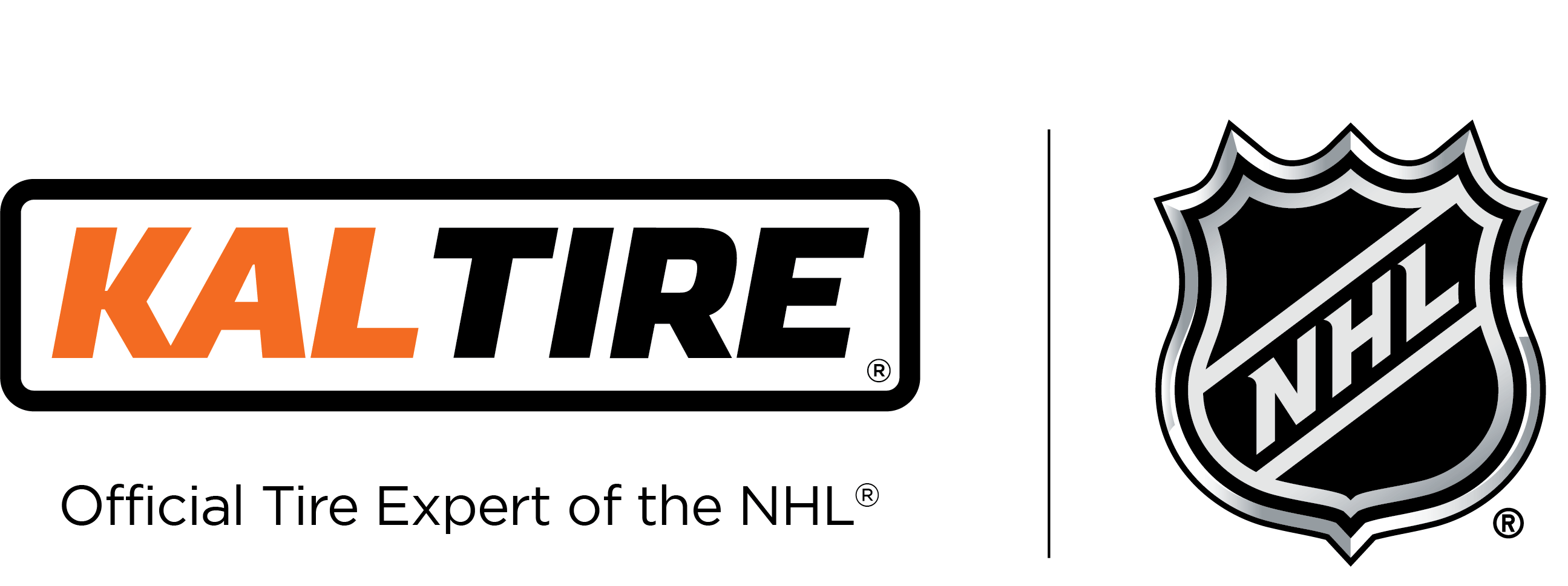Which spare tire is right for you?
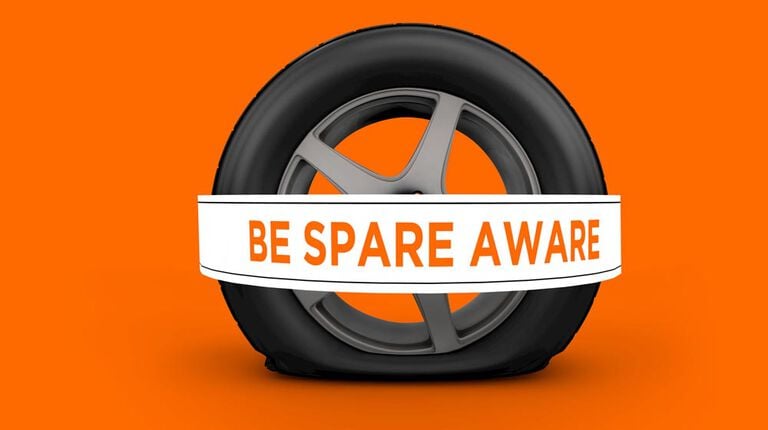
When you think of a spare tire, do you imagine a ‘donut’ compact spare tire or a clunky, full-size spare tire on a rim that you can barely lift on your own? Or maybe you’ve got a brand new vehicle that has no spare because it’s outfitted with run-flat tires or a flat tire repair kit.
Today’s drivers have a myriad of choices when it comes to spare tires, each offering a different lifespan and different levels of safety and performance in the event of a flat tire.
To help you better understand your options, we’ve created this handy guide to spare tires.
SPARE TIRE OPTION 1: The full-size spare tire
The full-size spare tire looks just like the other tires on your vehicle. As a matching spare tire, it’ll be the same size as your other tires, and it could be the same brand or a different brand.
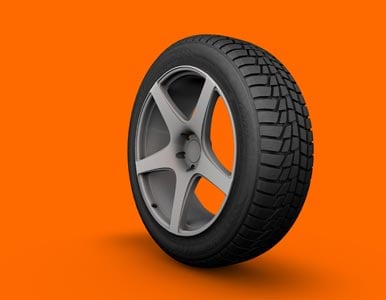
Advantages:
- If you get a flat tire and you’ve got a full-size spare tire to install, you’ll be able to drive on it as long as you like instead of having to race to a tire repair shop.
- When you include a full-size spare in your regular tire rotation, you can extend the life of all five tires.
- In addition to excellent safety and handling, full-size spares maintain a consistent look on your vehicle.
Disadvantages:
- They’re heavy. That means they’re harder to lift and they can take a toll on your fuel economy.
- They take up more space in your trunk if you don’t have an undercarriage slot.
- You may need to buy five tires and rotate them all evenly.
The full-size spare is a good choice for drivers who…spend a lot of time off-roading or drive long distances between service centres and want the optimum safety, handling and peace of mind of a full-size matching spare.
SPARE TIRE OPTION 2: The compact spare tire, AKA 'The Donut'
Think of a compact spare tire as the stand-in for your regular size road tires—a lightweight version you can use just long enough and at low enough speeds to reach a service station.
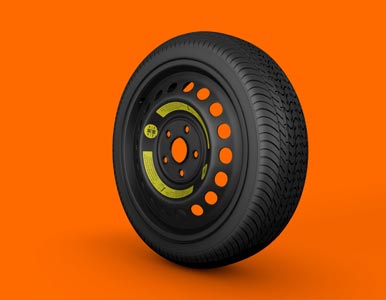
Advantages:
- Since it’s much smaller, you’ll have more room for strollers, ball bags, camping gear, wardrobe changes, or whatever it is you need your trunk for.
- The lighter weight of a donut spare tire may give better fuel economy compared to a full-size spare. And almost anyone can lift one of these.
Disadvantages:
- They’re only for emergency use to drive at a low maximum speed limit get you to a tire repair centre.
- Compact spares can impact important vehicle features such as ABS, traction control and your speedometer.
A compact spare tire is a good choice for drivers who…mostly do city or commuter driving and you need a spare tire option that’s light enough for you to handle on your own if need be.
SPARE TIRE OPTION 3: Run-flat tires (no spare tire)
Most run-flat tires are designed with reinforced sidewalls to give you enough tire pressure while deflating or deflated so you can make it to a service centre. That means there’s no need for a spare tire.
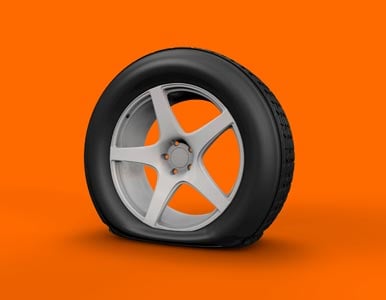
Advantages:
- Heaps of trunk space.
- Better fuel mileage.
Disadvantages:
- Stiff sidewalls mean you’re apt to feel bumps in the road a little more.
- Generally, you can only travel 80 kilometres per hour for 80 kilometres on a deflating or deflated run-flat tire, which might not be far enough on a road trip in remote areas.
- Not all flat run-flat tires are repairable, and they can be more expensive to replace.
Run-flat tires are a good choice for drivers who…don’t like the idea of changing a flat tire and most of your travels are in or just outside the city.
SPARE TIRE OPTION 4: Repair and inflation kits (no spare)
To help drivers achieve better fuel economy and save space, some vehicle manufacturers have replaced spare tires with a flat tire repair kit, aka emergency inflators and tire repair supplies such as a foam or sealant.
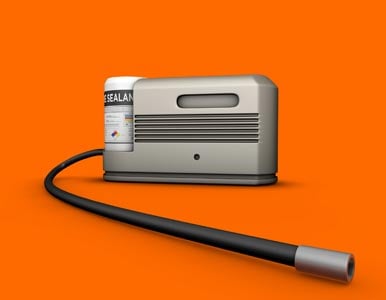
Advantages:
- They take up about as much space as a hair dryer.
Disadvantages:
- They can only temporarily repair punctures less than a quarter of an inch in size on the tread (face) of the tire, not the sidewall.
- Sealants and foam can also compromise the integrity of your tire, and it may not be repairable after using one of these products.
- You’ll need to read up and maybe even watch videos to understand how and when to safely use these products.


